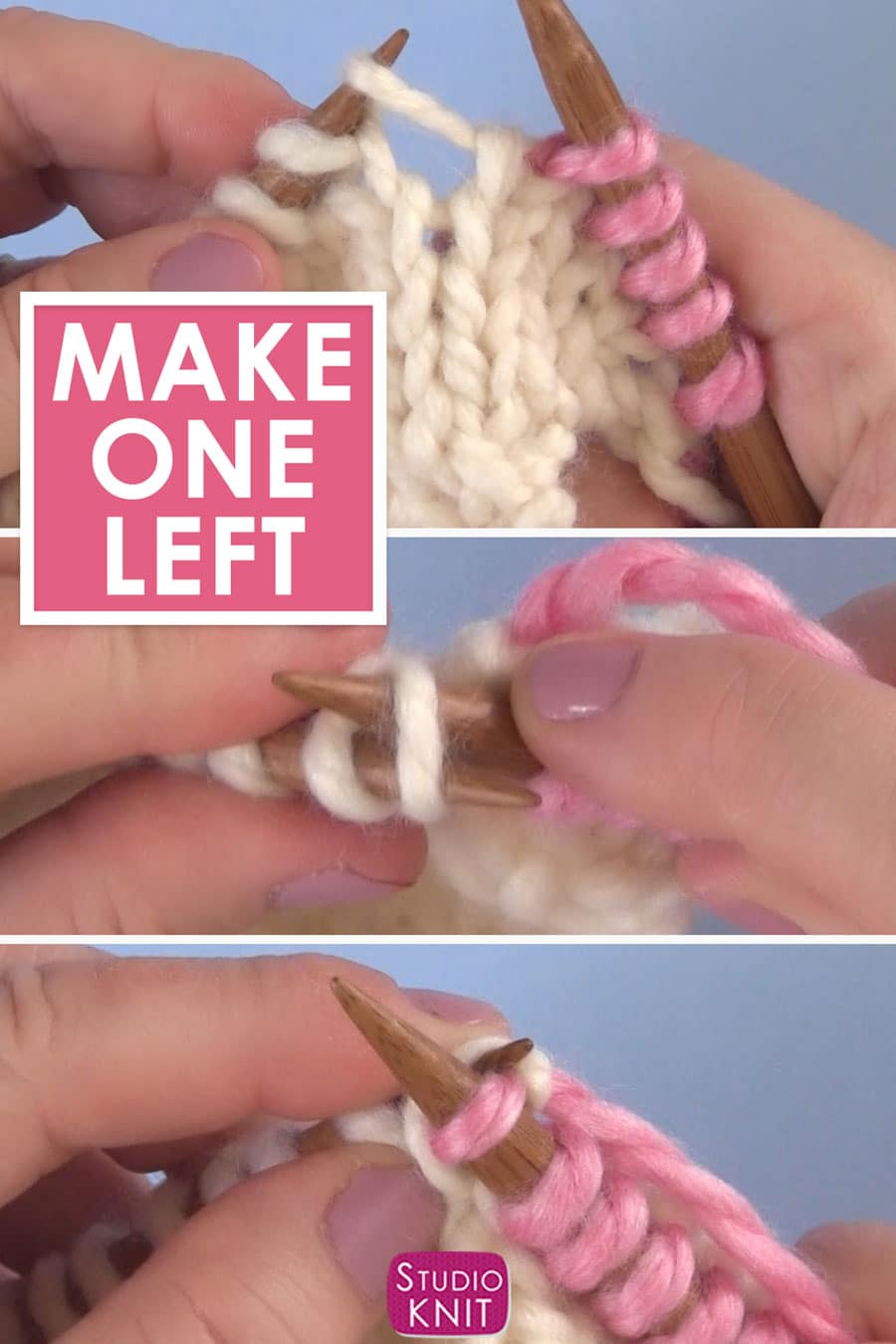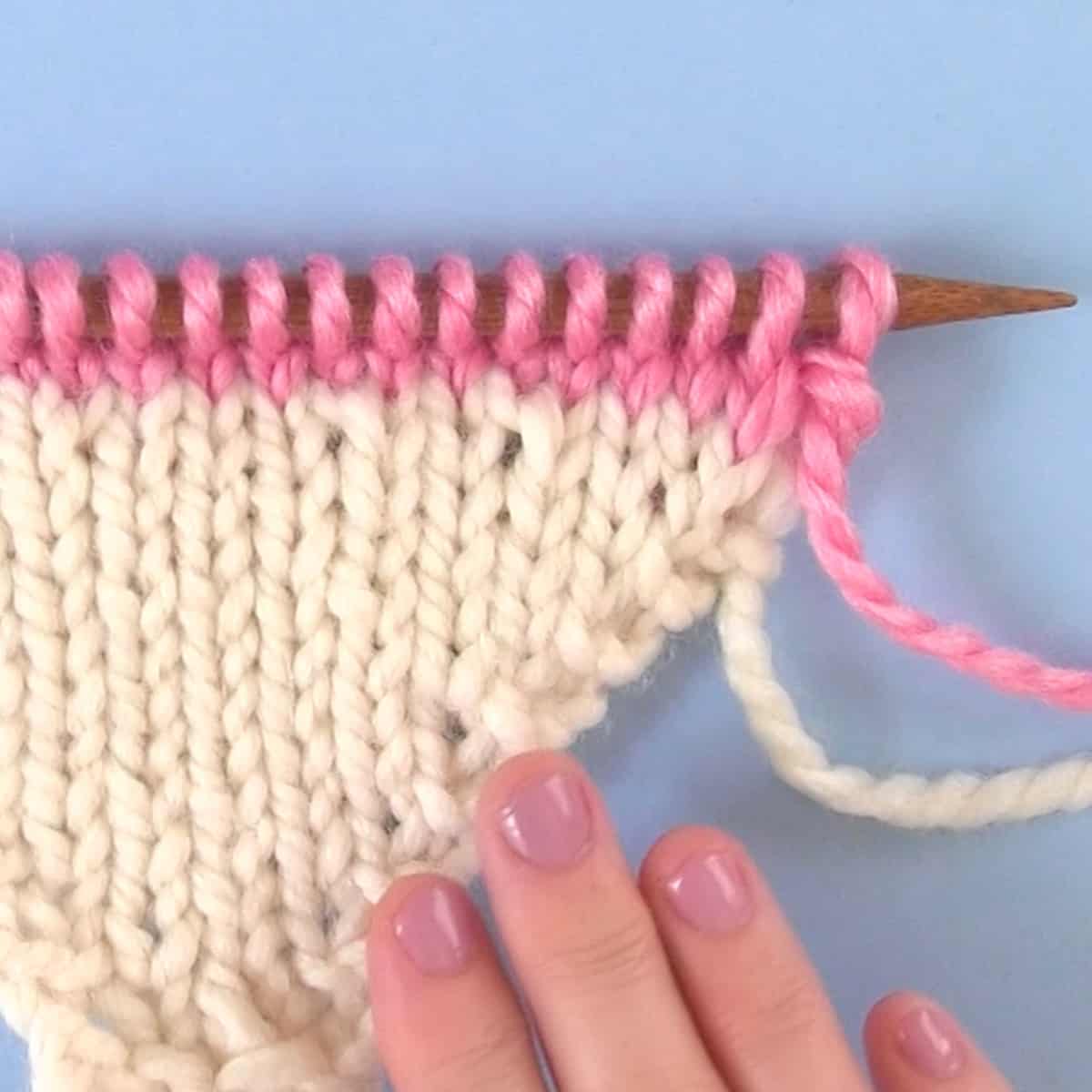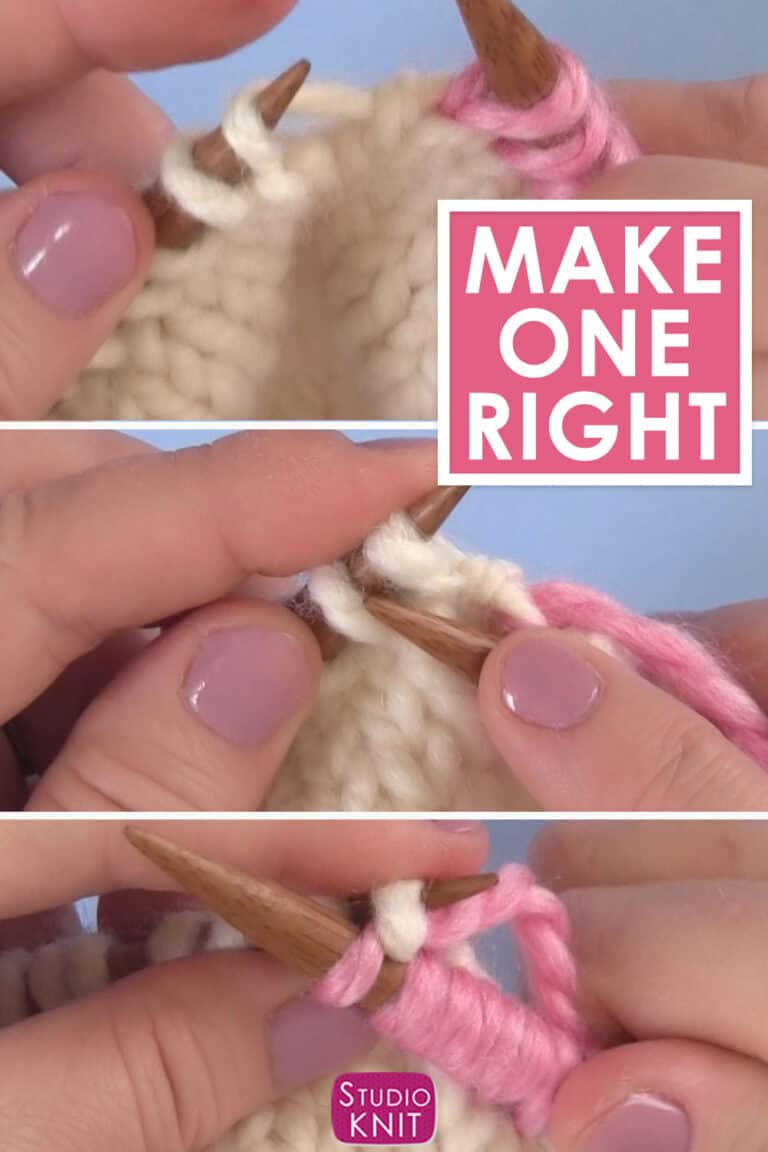Make 1 Increase Knitting
Make 1 Increase Knitting - The make one increase is a great way to add more fabric to your. The most basic way to increase is knitting in the front and the back of a stitch. Wool and the gang are a group of people who all happen to like a lot of the same stuff. Web both the m1r and m1l are techniques that will increase your knitting by one stitch. Basically, make one is an “afterthought yarn over” and just as easy to knit. Web a make one increase (m1) is a nearly invisible increase creating a knit stitch. Be sure to check what your pattern says, sometimes it will tell you if you should create a make 1 right or a make 1 left. Web to get more stitches in knitting, an increase is needed. In this video, jen lucas explains how to work the make one (m1) increase. This increase is called a make 1, because you make a stitch by itself, instead of using a previous stitch. We call it diy fashion. If a patterns asks you to simply m1, they are asking for the left slant m1. This increase can lean to the left or to the right depending on which direction you pick up the new stitch. Web make 1 increases are typically written in your pattern as a m1. M1l is a great increase. Web learn how to work the make 1 right (m1r) and make 1 left (m1l) increases. How to knit them and how to tell them apart so you don't get confused. The slant is sometimes specified in the pattern as a left slant (m1l) or a right slant (m1r). Web make 1 increases are typically written in your pattern as. Web make 1 is the most invisible increase in knitting. Web one form of increasing in knitting is to work into the strand between two stitches. The m1r increase slants to the right, while the. In this video, jen lucas explains how to work the make one (m1) increase. Web a make one increase (m1) is a standard increase found. The most basic way to increase is knitting in the front and the back of a stitch. Web a make one increase (m1) is a standard increase found in knitting patterns. This increase is called a make 1, because you make a stitch by itself, instead of using a previous stitch. It utilizes the running thread between two live stitches. Web the probably easiest standard increase is called make one and creates a small eyelet. M1l is a great increase stitch for the knit side of your work. Web to get more stitches in knitting, an increase is needed. Wool and the gang are a group of people who all happen to like a lot of the same stuff. This. It’s an easy way to increase in knitting projects like sweaters, hats and sock knitting patterns. Web make one increases are created by working into the strand in between two stitches on your knitting needles. If a patterns asks you to simply m1, they are asking for the left slant m1. Web make 1 is the most invisible increase in. It utilizes the running thread between two live stitches to create a new stitch. These right and left leaning increases add a stitch without leaving a large hole. Web make 1 is the most invisible increase in knitting. In this video, jen lucas explains how to work the make one (m1) increase. Web in this video we will show you. They’re perfect for sweaters, socks, and anywhere else that. Make 1 increase are made up of the string that is between two stitch on the row previously created. This increase is called a make 1, because you make a stitch by itself, instead of using a previous stitch. The most basic way to increase is knitting in the front and. How to knit them and how to tell them apart so you don't get confused. The most basic way to increase is knitting in the front and the back of a stitch. This increase can lean to the left or to the right depending on which direction you pick up the new stitch. M1l is a great increase stitch for. Wool and the gang are a group of people who all happen to like a lot of the same stuff. This increase can lean to the left or to the right depending on which direction you pick up the new stitch. We call it diy fashion. If a patterns asks you to simply m1, they are asking for the left. Web the make 1 (also known as the lifted make 1) is an easy and very tidy looking increase. Web make one increases are created by working into the strand in between two stitches on your knitting needles. Many of today’s designers prefer the make one over the popular kfb (knit into front and back of stitch) which creates a knit stitch followed by a purl stitch. It is less noticiable than knitting into the front and back of a stitch. It doesn’t leave a visible hole. If a patterns asks you to simply m1, they are asking for the left slant m1. Web make 1 is the most invisible increase in knitting. Web to get more stitches in knitting, an increase is needed. Web make 1 increases are typically written in your pattern as a m1. Web a make one increase (m1) is a nearly invisible increase creating a knit stitch. The most basic way to increase is knitting in the front and the back of a stitch. Web a make one increase (m1) is a standard increase found in knitting patterns. Wool and the gang are a group of people who all happen to like a lot of the same stuff. How to knit them and how to tell them apart so you don't get confused. Web learn how to work the make 1 right (m1r) and make 1 left (m1l) increases. They’re perfect for sweaters, socks, and anywhere else that.![How to M1L and M1R Knitting increases without the confusion [+video]](https://nimble-needles.com/wp-content/uploads/2020/04/make-one-right-2-1024x684.jpg)
How to M1L and M1R Knitting increases without the confusion [+video]

KNITTING TUTORIAL Make one (m1) increase stepbystep photo tutorial
![M1L Knitting & M1R Knitting Increases [2 Easy Techniques]](https://knitting.com/wp-content/uploads/2023/01/IMG_1121-1024x1024.jpg)
M1L Knitting & M1R Knitting Increases [2 Easy Techniques]

Make One Knitting Increase (M1, M1L, M1R) Studio Knit

Make One Knitting Increase (M1, M1L, M1R) Studio Knit
/M1_4-5ad10f1418ba010037438ea3.jpg)
How to Increase Stitches with Make One (M1) in Knitting

How To Increase In Knitting Made Easy for Beginners TREASURIE

How to Increase in Knitting Make 1 With Left Twist (M1L) An Annie’s

Rochelle Wallace How To Increase A Stitch In Knitting Without A Hole

Make One Knitting Increase (M1, M1L, M1R) Studio Knit
Web Learn How To Increase 1 Stitch By Picking Up The Horizontal Loop Beforenext Stitch And Knitting Into The Back Loop.
The Slant Is Sometimes Specified In The Pattern As A Left Slant (M1L) Or A Right Slant (M1R).
The Only Difference Is The Direction Of The Increase.
In This Video, Jen Lucas Explains How To Work The Make One (M1) Increase.
Related Post: